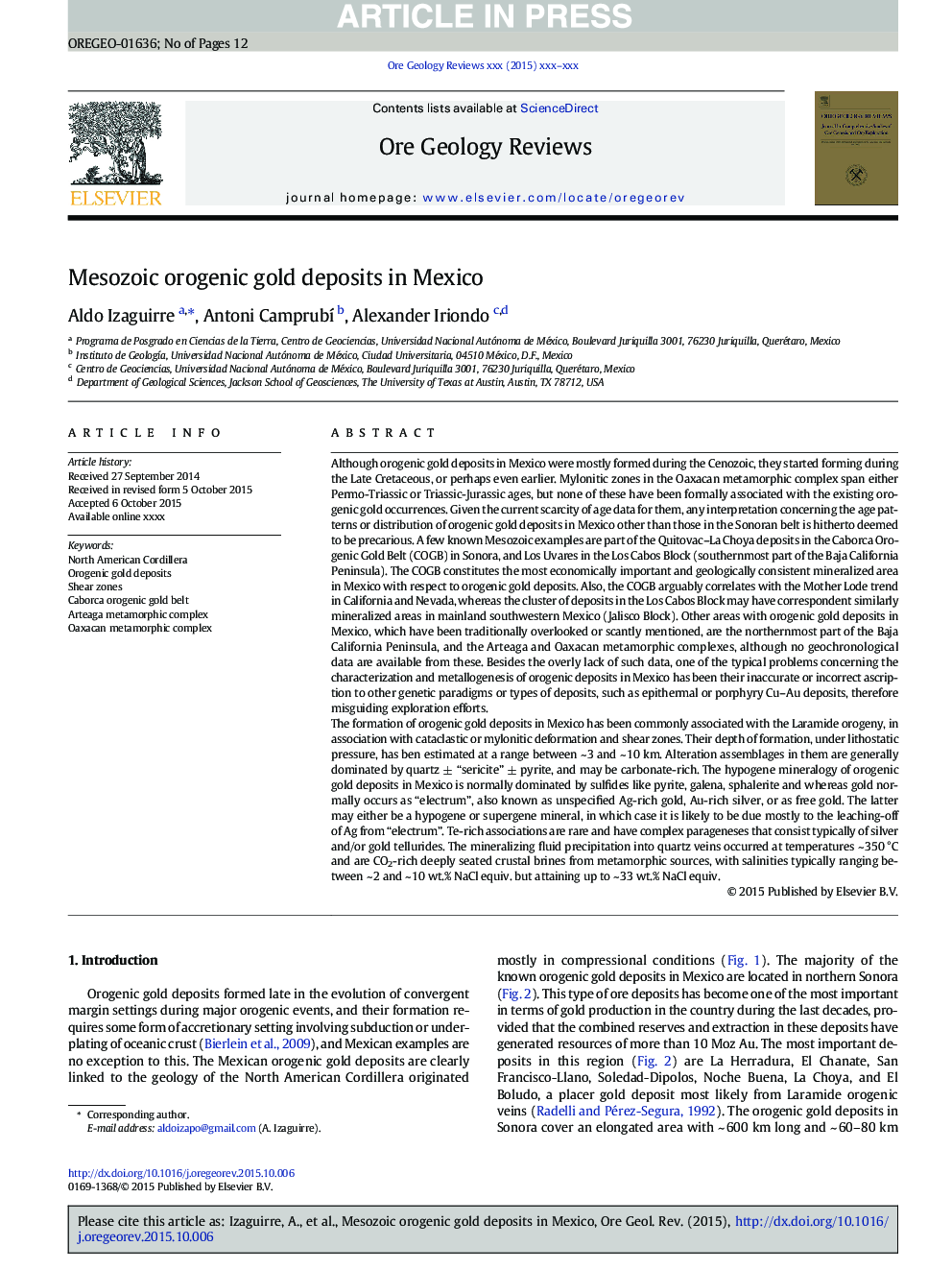| Article ID | Journal | Published Year | Pages | File Type |
|---|---|---|---|---|
| 5782539 | Ore Geology Reviews | 2017 | 12 Pages |
Abstract
The formation of orogenic gold deposits in Mexico has been commonly associated with the Laramide orogeny, in association with cataclastic or mylonitic deformation and shear zones. Their depth of formation, under lithostatic pressure, has ben estimated at a range between ~ 3 and ~ 10 km. Alteration assemblages in them are generally dominated by quartz ± “sericite” ± pyrite, and may be carbonate-rich. The hypogene mineralogy of orogenic gold deposits in Mexico is normally dominated by sulfides like pyrite, galena, sphalerite and whereas gold normally occurs as “electrum”, also known as unspecified Ag-rich gold, Au-rich silver, or as free gold. The latter may either be a hypogene or supergene mineral, in which case it is likely to be due mostly to the leaching-off of Ag from “electrum”. Te-rich associations are rare and have complex parageneses that consist typically of silver and/or gold tellurides. The mineralizing fluid precipitation into quartz veins occurred at temperatures ~ 350 °C and are CO2-rich deeply seated crustal brines from metamorphic sources, with salinities typically ranging between ~ 2 and ~ 10 wt.% NaCl equiv. but attaining up to ~ 33 wt.% NaCl equiv.
Related Topics
Physical Sciences and Engineering
Earth and Planetary Sciences
Economic Geology
Authors
Aldo Izaguirre, Antoni CamprubÃ, Alexander Iriondo,
